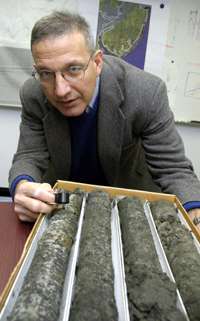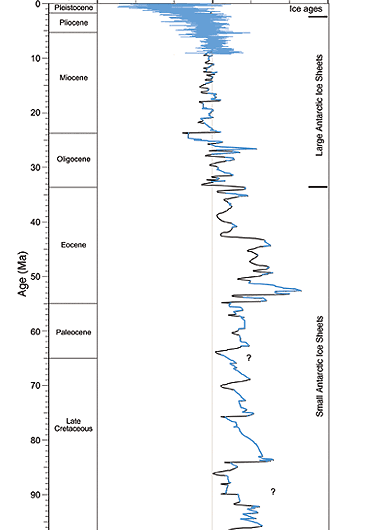Global Warming Doubles Rate of Ocean Rise

Ocean levels are rising twice as fast today as they were 150 years ago, and human-induced warming appears to be the culprit, say scientists at Rutgers.
While the speed at which the ocean is rising – almost two millimeters per year today compared to one millimeter annually for the past several thousand years – may not be fodder for the next disaster movie, it affirms scientific concerns of accelerated global warming.

In the Nov. 25 issue of the journal Science, geological sciences professor Kenneth G. Miller reports on a new record of sea level change during the past 100 million years based on drilling studies along the New Jersey coast. The findings establish a steady millimeter-per-year rise from 5,000 years ago until about 200 years ago. In contrast, sea-level measurements since 1850 from tidal gauges and more recently from satellite images reveal the current two-millimeter annual rise.
“Without reliable information on how sea levels had changed before we had our new measures, we couldn’t be sure the current rate wasn’t happening all along,” said Miller. “Now, with solid historical data, we know it is definitely a recent phenomenon. The record therefore provides a new and reliable baseline to use in addressing global warming.”
He also reports other findings that argue against some widely held tenets of geological science. Miller claims, for example, that ocean heights 100 million years ago and earlier were 150 to 200 meters lower than scientists had previously thought. These findings imply lower sea floor spreading rates than scientists had widely assumed. Also, during the most recent age of dinosaurs, frequent sea-level fluctuations of 15-30 meters suggest small- to medium-sized but short-lived ice sheets in the Antarctic region. This casts doubt whether any of the Earth’s warmer eras were fully ice-free.
Miller’s team took five 500-meter-deep core samples of sediments onshore along New Jersey’s coastline from Cape May to Sandy Hook. The scientists examined the sediment type, fossils and variations in isotopes, or different forms of the same elements, at different levels in the cores they extracted. Miller also correlated these measurements with others from throughout the world to substantiate the global nature of their record.
Source: Rutgers University















